This site contains affiliate links. As an Amazon Associate, I earn a commission from qualifying purchases at no extra cost to you. Full Disclosure Here.
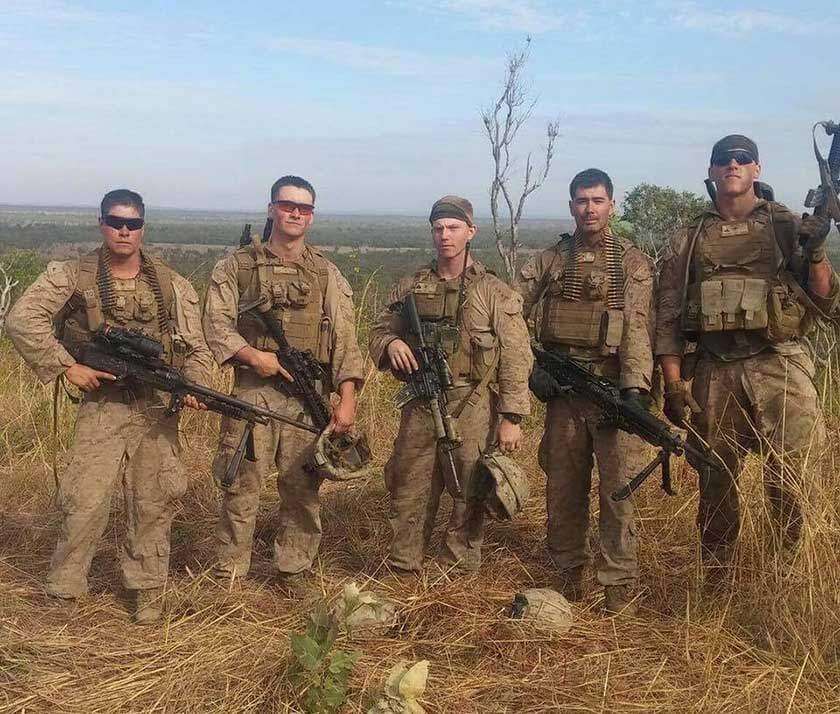
Starting Out – Infantry Training
I remember going through the Marine Corps School of Infantry (AKA the School of Pain). We were all tired of training in the freezing cold North Carolina weather.
Towards the end of training, I remember a Machine Gun Combat Instructor telling us “keep your heads up, in a couple of weeks you will all be sitting in your Barracks rooms prestiging in Call of Duty.”
His point was that in a short period of time we would be in the fleet and life would get easier.
Honestly, that was not the case. In my experience, Marine Infantry life is never easy.
Before I go in detail about my experiences, I just want to mention there is no “one Marine Corps” and everyone has very different experiences, even within the same Military Occupational Specialty (MOS).
A lot of things come down to where you get stationed, your leadership (chain of command), and what’s going on in the world during the time of your enlistment.
On the rest of this page, I’ll cover things that really stood out to me while being in the Marine Corps Infantry.
Marine Infantry Jobs List
While in the School of Pain, at some point you’ll be assigned an official MOS.
Depending on the needs of the Corps you’ll get to pick (kind of) from a number of jobs.
I will write an entire page covering a full Marine Infantry MOS lost and the core responsibilities of each job, but this page is mostly about infantry life, so I’ll just give you skinny on what each job does. You can also check this full list of Marine Corps jobs here.
Rifleman: Looking to be a professional door kicker? Looking to be an expert in patrolling, room clearing, weapon system employment, and infantry tactics? If so, the job of a Marine Corps Rifleman might be exactly what you’re looking for.
Machine Gunner: As far as what a machine gunner does… Let me just type out the Machine Gunner Creed. I think it sums it out best!
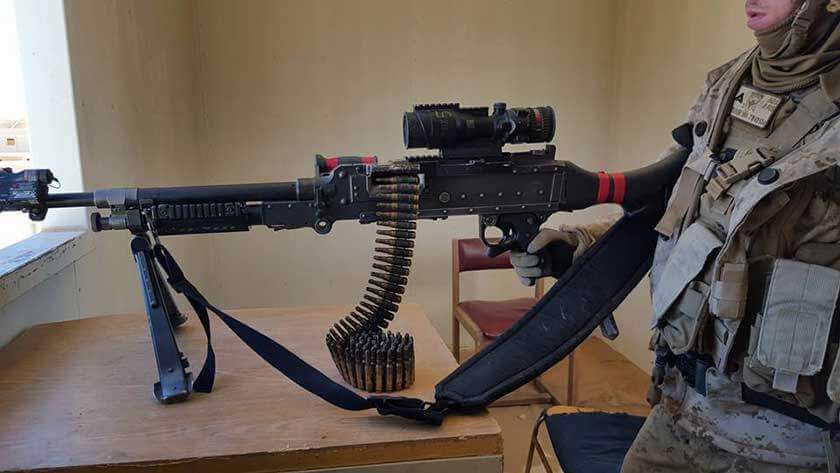
- We will cut down our enemies in droves. Our fires will be the substance of their nightmares. We will protect our brothers. The fields of the dead shall serve as the evidence of our passing.”
My God… Just typing that out I had to let out an OOH-RAH!
Machine gunners have a cool job. I mean after all… you freaking shoot machine guns for a living!
Assualtman: When I think of a Marine Corps Assualtman, the first thing that comes to my mind is a geeky Marine that should have went Intel shaping C4 into the shape of a penis. That’s because that’s exactly what I saw them doing at SOI. They’re also usually pretty smart, I mean, the Corps isn’t going to let some dummy play with C4. Being an Assualtman is an awesome job, but unfortunately, they’re being phased out and replaced by combat engineers. They are responsive for explosives and firing a wide range of rockets. I’ve heard them called “Marine Rifle with Bombs” and I think that description sums them up best. They’re basically riflemen with a little extra firepower.
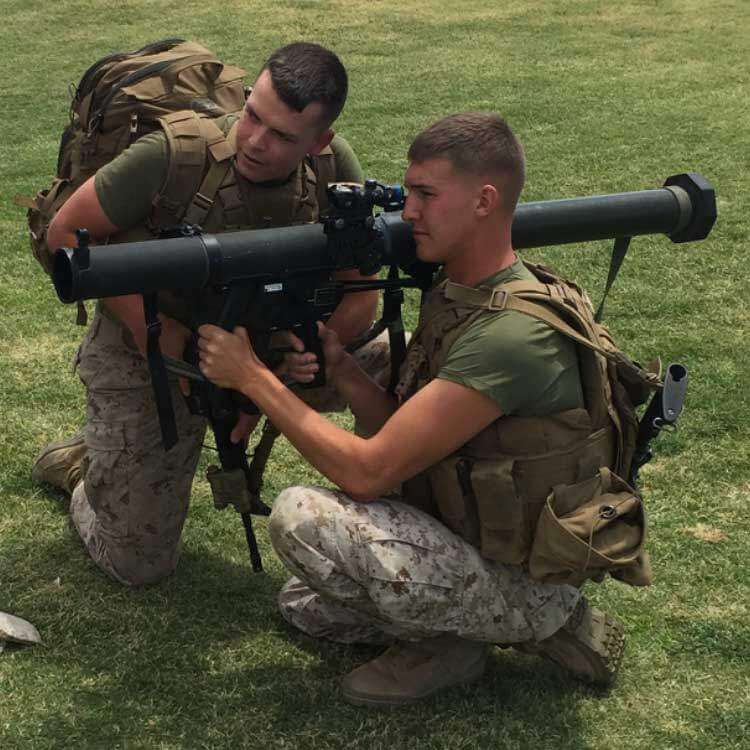
Toe Missile Gunner: This is a pretty cool job! If you aren’t into hiking this is probably the best MOS for you. Out of all the infantry jobs, these guys hike the least. That’s because the anti-tank missiles they have to fire are far too heavy to be carried. When they aren’t playing World of Warcraft they’re learning how to fire rockets and destroy enemies with missiles!
Mortarman: This is what I was! A Mortarman provides indirect fire using either 60mm or 81mm mortars. Unfortunately, because modern warfare typically involves civilians (which we are trying to protect not shell) mortars can’t be used that much, so when deployed a lot of times mortarman just act like 0311s (rifleman). That said, being a mortarman is a ton of fun and it is actually the most technical job in the infantry. A lot more goes into firing mortars than you might think!
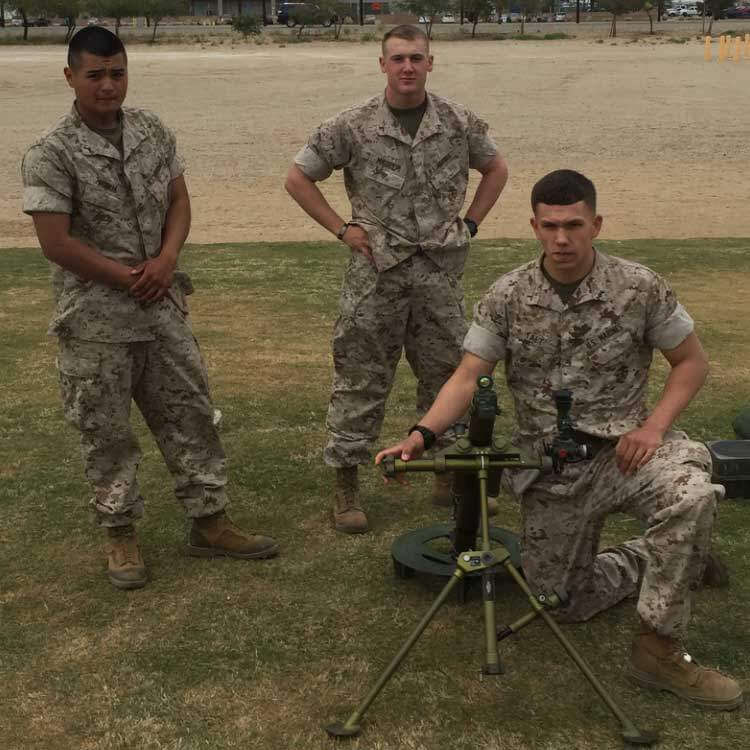
Want to be a Marine sniper? Not so fast! That opportunity is far from guaranteed and may be offered to you later on down the road (if you meet the requirements and your chain of command is willing to let you go).
Hitting the Fleet – What Barracks Life is Like
On days when you aren’t out in the field camping and training, you’ll be in the barracks. Some barracks are nice, others should be condemned. It’s really hit or miss when it comes to living conditions in the Marines.
Usually when in garrison you will be doing administrative tasks like paperwork, online training, physical training, etc.
A typical day in the barracks looks something like this.
0530 to 0600: Wake up, shave, get ready for PT
0600 to 0615: Formation and start of physical training (PT)
0730 – PT Ends
0730 to 0900: Shower, eat chow, get ready for the day.
0900 to 1100: Classes or MCI, waiting to hear what higher up wants you to do
1100 to 1130: Chow
1130 to 1530: Training like gun drills, immediate action drills, prepper gear for the field, cleaning weapons, cleaning in general, knowledge review.
1530 to 1630: Turn in Weapons and wait for word
Around 1630 – Company formation and dismissal for the day.
Here is a video of a Marine showing what is barracks room is like.
Around Half the Time You Will be In the Field (When not Deployed)
Life in the field is awesome and sucks at the same time. On one hand, you’re doing exactly what you signed up to do. You’re shooting guns. You’re learning basic infantry tactics. You’re hanging out with your boys gaining some unique experiences.
On the other hand, you’re tired. A lot of the time you’re just completing tasks like gun drills to make your leadership happy.
Sleep? Forget about that. Even on nights when you don’t have fire watch, you can forget about a full night’s sleep.
On most nights in the field, there will be some type of night training. So as soon as the sun goes down, you’ll be setting up your night vision goggles (NVGs), making sure you have fresh batteries, and getting ready for whatever your chain of command has planned for you.
Let me give you an example of what a night training exercise might look like.
It’s 2 AM, you’re finally hitting that REM sleep cycle. You’re sleeping like a baby and dreaming about all the fun things you’ll get to do when you get out of the Corps.
Then, you hear people yelling. You’re hoping this is just a nightmare and that you’ll get to go back to sleep.
Then you see it.
Your chain of command has shot off a flare to signify the start of the night training exercise.
I was a mortarman, so usually, I would hear something like ON THE GUNS! Regardless of your MOS you’ll have to do whatever you were trained to do in case of a night attack.
Sometimes you’ll just have a night shooting range, which is actually a lot of fun, but you still don’t get to sleep much.
Other nights you’ll be practicing squad movements at night. You’ll be doing mock town invasions. Just doing all the things that Infantry Marines might actually face while on deployment or in times of war.
In the field, you’ll refine your craft. You’ll become an expert at whatever you signed up to do. If you sign up to be a rifleman, you’ll become a pro at speed reloads, setting up an ambush, throwing grenades, and moving and communicating with your teammates.
Hike Hike Hike – What Marine Corps Hikes Are Like
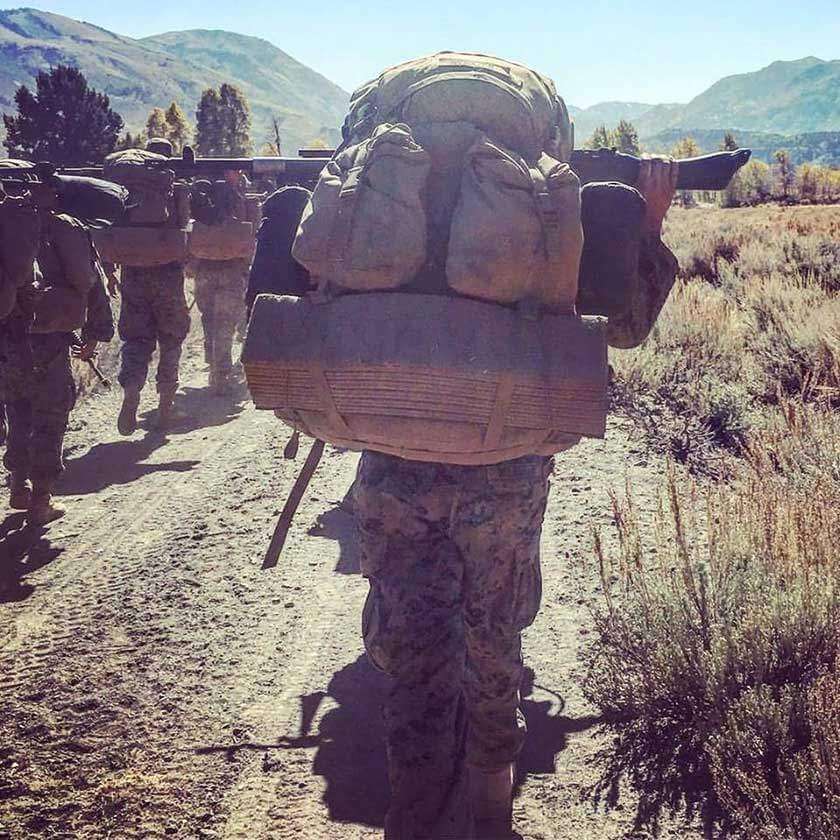
I really can’t talk about being a Marine without talking about hiking. In training, you’ll learn that a Marine’s primary means of transportation is on foot.
Sure, we get to ride in Osprey helicopters, Humvees, and boats from time to time, but when the shit hits the fan one thing Marines can always rely on is their ability to hike.
I really enjoyed hiking. Mostly because I was good at it. Marine Corps hikes aren’t just your average nature walk pace.
Hiking speed is typically about as fast as you can walk without it technically being called running. If guys in your platoon or company start to fall behind it really sucks because it creates a gap in the “formation.”
This is also referred to as the slinky effect. Basically, because the one guy fell behind everyone behind him will have to run in order to fill the gap that was created by him falling behind.
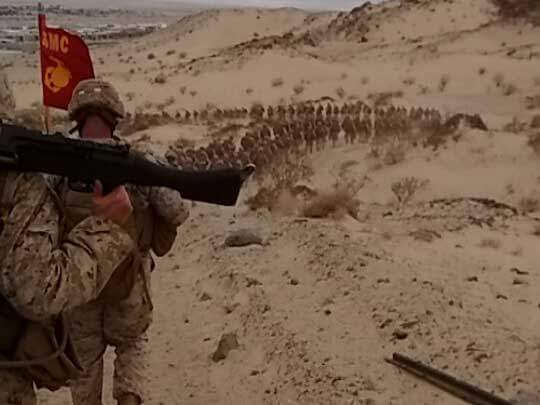
That’s why in the Marines there is a huge emphasis placed on being able to hike and being in great physical shape.
I remember one of my combat instructors telling me about a hike they had to make while in country (Afghanistan).
They had to hike 30k from one Forward Operating Base (FOB) to another.
The route they were taking was known to have enemy snipers. He said that he and some of the guys in his platoon took spare windshields from the Humvees at their fob and carried them along with them on the hike so they could take fire behind the glass and spot enemies that were shooting at them along their hike.
That brings me to my next point. On Marine Corps hikes you carry a TON of gear. This is especially true if you are in weapons company. Marines who are assigned to weapons company (Mortarman, Machine Gunners, and Assualtman) have to carry their issued rifle (usually an M4) along with crew serve weapons.
In total, this can add up to an additional 50 pounds of gear per Marine. For example, as a Mortarman, It wasn’t uncommon for me to have to carry the base plate for the mortar (attached to my pack), the bipods for the mortar, along with a few mortar rounds.
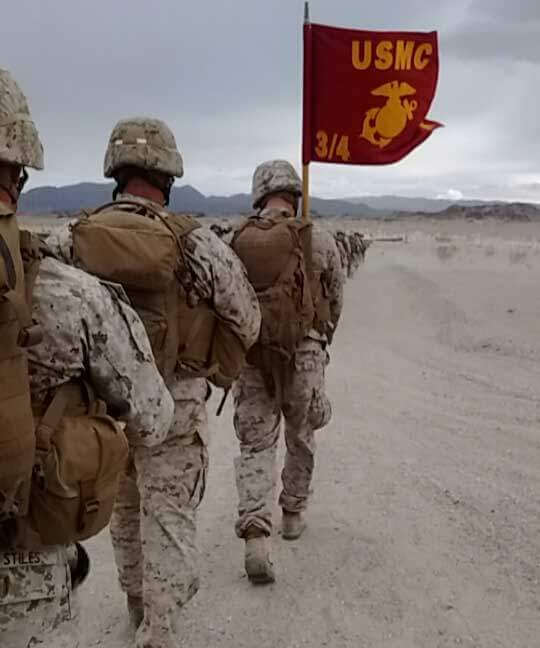
If there is anything you’ll learn about hiking while in the Marines is the importance of carrying only gear that is mission essential because ounces quickly turn to pounds when it comes to putting gear in your pack.
On hikes, it’s not uncommon to guys to “fall out” of hikes. Meaning for whatever reason they can’t continue with the hike. When this happens, they will usually get the “silver bullet” by a doc, which is a rectal thermometer to make sure their core temperature hasn’t risen outside of health ranges.
Bye Bye Sleep
If you decide to join the Marines, don’t expect to be sleeping or hitting that snooze button. While in the field, it’s not uncommon to only get 4-5 hours of sleep per night.
If you’re a lower rank, you’ll be assigned “fire watch” which basically just means you’ll have to stand guard and make sure nothing happens while your fellow Marines are asleep.
Fire watch is easy, nothing usually happens. You might get to shoot a coyote or 2 that gets too close to camp.
Train Shoot Train Shoot
It’s no secret that the Marine Corps mainly cares mainly about three things.
- How well can you move (physical ability)?
- How well can you shoot?
- How well come you communicate?
In fact, there are a lot of T-shirts that say “move, shoot, communicate.”
How fast you rank up in the Corps will largely depend on how well you can do those three things.
Oh and don’t worry, if you aren’t exactly a stud at any of those things, you’ll get a hell of a lot of practice while in the Corps.
While it can be frustrating at times that the Marine Corps largely only cares about a few things when deciding what a “good Marine” is, I guess it does make sense.
When you think about the mission an infantry might face, the likelihood of mission success will increase greatly if they can effectively move, shoot, and communicate.
Close Friends
Another thing that really stands out to me about Marine Infantry life is comradery and close friendships.
You see, when you join Corps, you’ll be spending a TON of time with the same people.
The good news is most of them are some of America’s finest.
Don’t get me wrong, some people join for the wrong reasons and are frustrating to even look at after a while.
But… the far Majority are there because they want to protect the good ol’ USA.
Most guys are easy to relate with and have a good work either. You can trust them and your shared misery will make you very close.
Deploy
Here are some good videos by Marines who share their experiences during deployment.
Here is another video you can check out.
Wrap Up
All in all, life in the Infantry is hard, but at the end of the day 4 years goes quick. Sure, being a POG (person other than grunt) might seem nice. I mean, less time in the field, more sleep, and it’s a heck of a lot less dangerous. That’s all great, but being a grunt is a unique experience and when you get you of the Corps you’ll probably be a lot more proud that you had one of the hardest jobs in the world.
Let me know if you have any questions below.

Great article, I just enlisted not too long ago! I’m still in my senior year of High School and going straight to the infantry fresh out of high school. I’m still nervous and scared of death to get my legs blown off and all that other stuff. I loved how this article was set up. Email me if possible thank you!
Hi Ab, going infantry is a great decision, you won’t regret it. I’ll send you an email now.